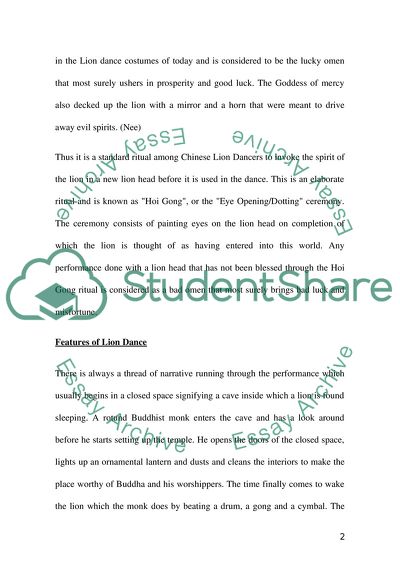Cite this document
(“Chinese Lion Dance Research Paper Example | Topics and Well Written Essays - 2000 words”, n.d.)
Chinese Lion Dance Research Paper Example | Topics and Well Written Essays - 2000 words. Retrieved from https://studentshare.org/culture/1723837-chinese-lion-dance
Chinese Lion Dance Research Paper Example | Topics and Well Written Essays - 2000 words. Retrieved from https://studentshare.org/culture/1723837-chinese-lion-dance
(Chinese Lion Dance Research Paper Example | Topics and Well Written Essays - 2000 Words)
Chinese Lion Dance Research Paper Example | Topics and Well Written Essays - 2000 Words. https://studentshare.org/culture/1723837-chinese-lion-dance.
Chinese Lion Dance Research Paper Example | Topics and Well Written Essays - 2000 Words. https://studentshare.org/culture/1723837-chinese-lion-dance.
“Chinese Lion Dance Research Paper Example | Topics and Well Written Essays - 2000 Words”, n.d. https://studentshare.org/culture/1723837-chinese-lion-dance.


